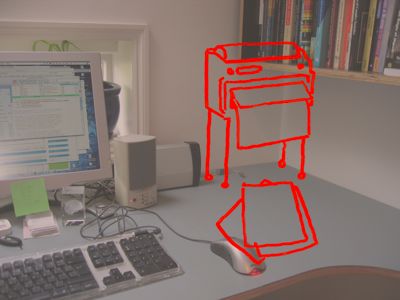The Hills Are Alive with the Sound of Interaction Design
In the spirit of creating new products to fit into processes, here’s a sketch of a desktop printer for use by small groups.
I don’t know if you know of this behaviour, but there are certain people in my life who send me articles and newspaper clippings. My mum for one. There are people who send my holiday photos, like my sister and other members of my family. At the moment we do it with scanners and email and shared folders.
Really, I just want to give them access to my printer. They’re so close to me, I definitely want to see anything they decide to send me. My close family and friends would be able to print directly into my home. It’d be less like a printer and more like a fax machine crossed with social networking: It’s a social letterbox.
The social letterbox printer sits on the wall so that when it’s finished printing, the paper falls to the desk with a satisfying thump. It prints slowly, because it’s often going to be working when I’m not there and there’s no hurry. The paper is probably cheap, perhaps thermal paper. The social purpose of the printer changes its physical form.
As well as having a fast laser printer on the floor, I’d have a smaller, cheaper, slower social letterbox on my desk. I’d buy two printers! And we’ve doubled the size of the printer market, at a stroke.
Now I put this article on the company blog, and shortly afterwards I heard about a company which runs a service called Presto. They sell a printer which you can email to. I don’t think it’s quite right. Email doesn’t seem like quite the right model, because you’re using up paper, you know, somehow that has to be apparent, and I’m not sure it understands the social aspects quite well enough.
But people are venturing into this territory, and that’s good enough for me.
